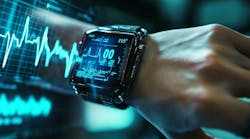Fatigue continues to be a problem for workers. In fact, more than 43% of U.S. workers are sleep deprived and say they are too tired to function at their job, according to a survey released by the National Safety Council in 2019. By 2020 that number went up to 77%. Although the pandemic was probably a large component of that, the numbers are not going in the right direction.
This issue has a direct impact on safety in the workplace. It’s estimated, by the National Safety Council, that 13% of workplace injuries are caused by fatigue. Translated into costs, employers are paying more than $136 billion annually in health-related lost productivity. Viewing this number from a cost per employee, it’s around $1,200-$3,100 per year.
In addition to injuries, fatigue can cause reduced mental cognition, decision-making, and reaction time, as well as decreased performance and productivity.
As is the case with solving many issues, technology has a large role to play. In this case, fatigue monitoring wearables use a range of sensor technology or visual cues to assess a worker’s fatigue and impairment levels.
Three common types of monitoring capabilities include:
• Wearable devices that use electroencephalography (EEG) sensors to monitor brain activity relative to fatigue
• Wearable devices that use cameras to monitor visual fatigue cues, such as microsleeps and eye movement
• Fatigue monitoring that uses activity and sleep data from wearables to calculate potential impairment and fatigue levels
The NSC 2020 Safety Technology in the Workplace Survey reported that two specific sectors felt that wearable monitors were the most relevant technologies in their industries for mitigating serious injuries and fatalities. In the mining 56% of workers confirmed this, while 51% of utility workers made this assessment.
The survey provided a case study. Exelon, a Fortune 100 energy company, took on this issue through a series of stages. The first small-scale pilot looked into any barriers to adoption of technology that employees might have. Next they worked with labor unions to create data privacy policies which clearly spell out who would be accessing the data and the end use of the data.
Then the company employed a technology called Readi, which is a fatigue management information system that uses wearables to measure sleep patterns and predict who might experience fatigue on duty, and at what time. In 2020 they began voluntary tests.
The company reported that feedback from participants was largely positive from a number of angles. Employees expressed a better understanding of their own sleep patterns and the impact of fatigue on their performance and overall quality-of-life. Equally, management had a positive take on the technology and felt it was likely to improve safety by reducing near misses, human performance errors and safety-critical events.
Looking forward, the company is planning on using the data to improve daily decisions. From a larger perspective the company hopes the data can be used to quantify the physiological and cognitive decline associated with longer shifts.
Further examination of this issue was published in October 2022, Smart Wearables for the Detection of Occupational Physical Fatigue: A Literature Review.
In this paper, the authors provided an overview of the use of smart wearable devices to monitor and detect occupational physical fatigue. The paper also explores challenges in adopting these technologies.
Their conclusion was that “smart wearables associated with artificial intelligence and machine learning technologies have proven their effectiveness in detecting and monitoring fatigue in the workplace, especially when the relevant challenges can be addressed with the latest and most advanced technologies. They also promise to act as predictive tools that can limit the serious impact of fatigue on workers’ health.”

